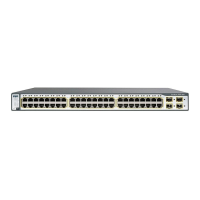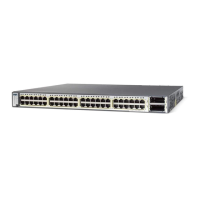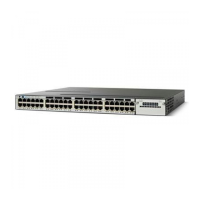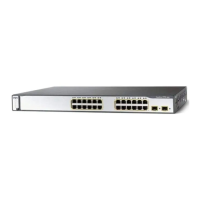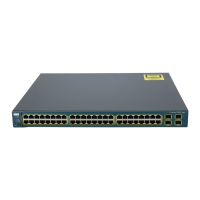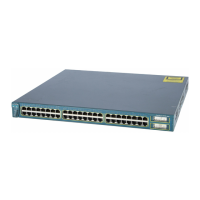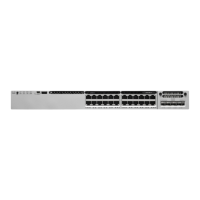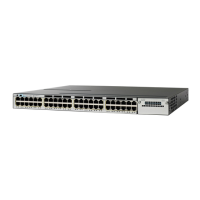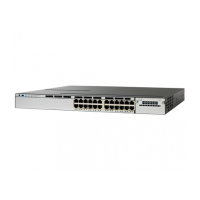2-272
Catalyst 3750 Metro Switch Command Reference
OL-9645-10
Chapter 2 Catalyst 3750 Metro Switch Cisco IOS Commands
match (class-map configuration)
Packets that do not meet any of the matching criteria are classified as members of the default traffic class.
You configure it by specifying class-default as the class name in the class policy-map configuration
command. For more information, see the
“class” section on page 2-35.
Examples This example shows how to create a class map called class2, which matches all the inbound traffic with
DSCP values of 10, 11, and 12:
Switch(config)# class-map class2
Switch(config-cmap)# match ip dscp 10 11 12
Switch(config-cmap)# exit
This example shows how to create a class map called class3, which matches all the inbound traffic with
IP-precedence values of 5, 6, and 7:
Switch(config)# class-map class3
Switch(config-cmap)# match ip precedence 5 6 7
Switch(config-cmap)# exit
This example shows how to create a class map called dot1q, which matches all outbound traffic with an
outer VLAN ID of 5 and an inner VLAN ID of 3 to 8:
Switch(config)# class-map match-all dot1q
Switch(config-cmap)# match vlan 5
Switch(config-cmap)# match vlan inner 3 - 8
Switch(config-cmap)# exit
This example shows how to delete the IP-precedence match criteria and to classify traffic using acl1:
Switch(config)# class-map class2
Switch(config-cmap)# match ip precedence 5 6 7
Switch(config-cmap)# no match ip precedence
Switch(config-cmap)# match access-group acl1
Switch(config-cmap)# exit
This example shows how to specify a list of physical ports to which an interface-level class map in a
hierarchical dual-level policy map applies:
Switch(config)# class-map match-all class4
Switch(config-cmap)# match input-interface gigabitethernet1/0/1 gigabitethernet1/0/2
Switch(config-cmap)# exit
This example shows how to specify a range of physical ports to which an interface-level class map in a
dual-level policy map applies:
Switch(config)# class-map match-all class4
Switch(config-cmap)# match input-interface gigabitethernet1/0/1 - gigabitethernet1/0/2
Switch(config-cmap)# exit
You can verify your settings by entering the show class-map privileged EXEC command.
Related Commands Command Description
class-map Creates a class map to be used for matching packets to the class whose name
you specify.
show class-map Displays QoS class maps.

